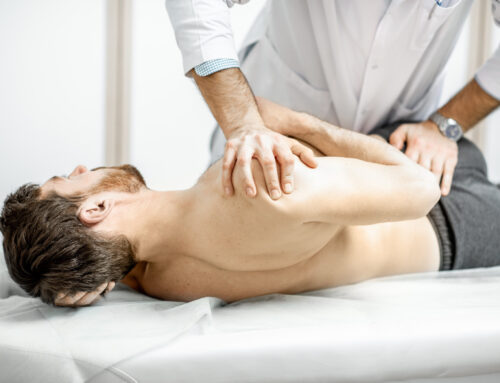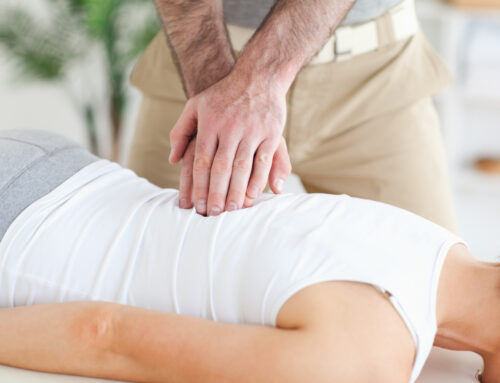
Chiropractic was founded in 1895 after hearing was restored in a patient following a spinal adjustment to the upper region of the spine.
Since then, our profession has been conducting research to help determine why spinal manipulation (adjustments) work so well.
Many conditions have been studied as well as the physiological responses to adjustment, including blood pressure changes, changes in blood chemistry such as hormone levels, circulation changes, and many other parameters of health.
For patients presenting muscle and joint complaints, posture, bone alignment and spinal curves have been long been evaluated by most of the health care professions, including chiropractic.
But the question remains: how important are spinal curves in the overall health picture of the patient? Can alterations in the “normal” curve lead to future trouble or be the cause of a current condition?
A recent study reported the results after conducting a “systematic critical literature review” in which all research published on this subject was reviewed for quality and content. The researchers gathered 54 studies published between 1942 and 2008, which included more than 20,000 patients and reported the association between the sagittal curve (curves when looking at a person from the side) and various health conditions.
There were many different types of studies and methods used to evaluate the sagittal curves of the lumbar (or low back, with 38 studies), thoracic (mid back, 34 studies) and cervical (neck, 6 studies) spine.
These methods included plain x-ray (25 studies), MRI (1 study), photographs (3 studies), visual analysis (5 studies), and those using a variety of instruments (21 studies).
In 5 studies, a strong association was reported between an increased angle in the mid back/thoracic spine (a condition known as kyphosis, sometimes referred to as “humpback”) and lung disorders causing breathing problems. Poor physical function and pelvic organ prolapse were also strongly associated with kyphosis. Similarly, future osteoporotic mid back/thoracic compression fractures were moderately associated with kyphosis deformity. Kyphosis was also moderately associated with heavy household activity, uterine prolapse and death in three other studies.
A moderate association was found between a reduced low back curve (lordosis) and increased low back pain.
No association with any health condition was found in many of the other studies.
The conclusion of the article reports that most of the studies did not fulfill the basic requirements for this type of study or had design flaws. The writers encouraged researchers to use new or better approaches to study this association between spinal curves and health and disease.
For the time being then, the jury is still out on the correlation between spinal curve changes and their impact upon general health.
Photo credit: ![]() Cory Doctorow via Compfight
Cory Doctorow via Compfight
How to Improve Posture Right Now: 4 Easy Suggestions
Our posture is the window to our spine’s health. The stereotypical admonition by the moms of America to their children to “sit up straight!” rings true! The more we give in to the relentless forces of
gravity, the more apt we are to suffer the effects of degenerative joint disease as we age. Following are four suggestions about how to improve posture.
- Put both feet on the floor.
Sitting or standing with your legs crossed twists your bones and can cause circulation problems. Uncross your legs and put both feet on the floor to improve posture now. - Think tall.
Slouching hurts your spine and compresses your organs. Instead of slouching, think tall, lengthening your spine, and giving your organs plenty of room to work. Tall posture helps you look and feel better. - Mind your head.
Your head is supposed to perch alertly on top of your spine, not roll forward. Instead, pull your head up and avoid forward head posture. Some people combat forward head posture by imagining themselves as puppets with strings extending up out of their heads. - Adjust your load.
If you are carrying something, try to distribute the weight evenly over both sides of your body. If you must carry something on just one side (like a purse), switch sides occasionally. Don’t let your load ruin your posture.
When we hear of people spending many thousands of dollars with aesthetic dentists to straighten out crooked smiles, we wonder how the priorities for crooked spines have gotten neglected? Perhaps because our smiles are visible to us in the mirror, but only others can see our humps and slumps as we assume the postures of our grandparents. You can take the first step to good posture today by scheduling a free posture assessment at Eastside Chiropractic. Our doctors will analyze your posture and recommend various programs and methods to help you achieve the correct posture your mother would be proud of! Call 864-292-6777.
October is Spinal Health Month in South Carolina
SC Governor Nikki Haley Proclaims October as Spinal Health Month
 You may not have represented the United States in London this summer, but that doesn’t mean you have to live your life on the sidelines. This fall, Dr. David Mruz of Greenville, SC, and other doctors of chiropractic across the country will highlight ways you can feel your best every day, regardless of your age, occupation or fitness level, during National Chiropractic Health Month in October. This year’s theme—”Find Your Game”—focuses on how everyone can take steps toward a pain-free, optimally functioning body.
You may not have represented the United States in London this summer, but that doesn’t mean you have to live your life on the sidelines. This fall, Dr. David Mruz of Greenville, SC, and other doctors of chiropractic across the country will highlight ways you can feel your best every day, regardless of your age, occupation or fitness level, during National Chiropractic Health Month in October. This year’s theme—”Find Your Game”—focuses on how everyone can take steps toward a pain-free, optimally functioning body.
 “From ‘weekend warriors’ to active grandparents, people have a wide range of health and activity goals,” says Dr. David Mruz. “The good news is that everyday victories are possible with just a few healthy lifestyle changes. Your chiropractic physician can offer help by providing nutritional advice, exercise and lifestyle recommendations and natural approaches to managing injuries, aches and pains.” In honor of Governor Haley proclaiming October as Spinal Health Month here in South Carolina, Dr. Mruz offers these tips to help you find your game:
“From ‘weekend warriors’ to active grandparents, people have a wide range of health and activity goals,” says Dr. David Mruz. “The good news is that everyday victories are possible with just a few healthy lifestyle changes. Your chiropractic physician can offer help by providing nutritional advice, exercise and lifestyle recommendations and natural approaches to managing injuries, aches and pains.” In honor of Governor Haley proclaiming October as Spinal Health Month here in South Carolina, Dr. Mruz offers these tips to help you find your game:
- Get Moving: You don’t have to train like an Olympian. Just aim for a minimum of 20 to 30 minutes of exercise three to four days a week.
- Stretch Daily: Improving flexibility is key to avoiding injury. Make a habit of stretching your major muscle groups each day.
- Beat Stress: New activities and experiences help prevent professional and personal burnout. Finding your game involves discovering new activties you enjoy.
- Eat Right: Even a few simple changes can have a postitive impact on your health. Limit red meat, sugar and salt, and don’t self-prescribe dietary supplements. Consult a health care professional to ensure your body gets the nutrients it needs to function optimally.
- Recharge: Try to sleep more each night, and revitalize with a glass of pomegranate juice and a brisk walk in the afternoon. Rest, exercise and good nutrition can put pep back into your step!
For more tips on feeling your best, follow this blog and visit www.ChiroHealthy.com.
Sponsored by the South Carolina Chiropractic Association and the American Chiropractic Association, National Chiropractic Health Month is a nationwide observance held each October. The event helps raise public awareness of the benefits of chiropractic care and its natural, patient-centered approach to health and wellness.
For more information about how Dr. Mruz can help you achieve better overall health and wellness, please contact us.



